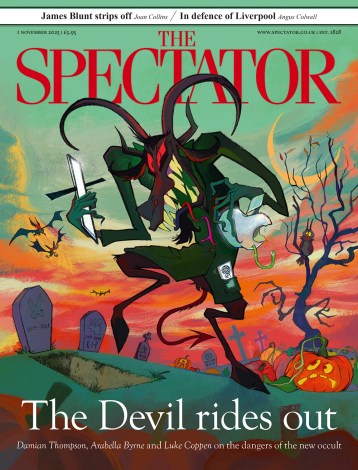Speed is in my blood. My father, grandfather and great-grandfather all used to race cars in their youth. We even have a hill-climb specialist car part-named after us, the Dellow. Just after I’d passed my test, my dad let me share the driving in his V12 Jag en route to our holiday home in Devon. I vividly remember him rebuking me whenever I let the speedometer dial creep below 100mph.
So I suppose it was inevitable that naughty habits would catch up with me in the end and that I’d find myself doing one of those compulsory speed awareness courses.
If there’s one thing every boy racer who has yet to experience one knows, SACs are a massive waste of time. They’re run by embittered ex-coppers with PTSD who torture you with bad jokes and treat you like children. You learn nothing except nannying safety propaganda. They’re so bad and so boring that frankly you’d be better off taking the three penalty points on your licence, rather than submit yourself to those four hours of purgatory.
So you can imagine my surprise when my father told me about the SAC which, by coincidence, he’d recently been forced to attend. ‘I found it really interesting,’ he said. ‘There was lots of useful stuff I didn’t know. The woman in charge was funny and engaging. It made me rethink my driving.’
Naturally I put this down to incipient senility. Or perhaps that feminisation that strikes men in their mid-eighties, making them suddenly more nervous and risk-averse. What I didn’t at all expect, till I went on the course, was that my dad would prove absolutely right.
It took place in one of those anonymous, empty conference hotels off the ring road at the edge of town. There were about 30 of us in all, one third women, the average age about 40, with one or two of the cockier lads clearly spoiling for a chance to deploy their devastating wit and/or specialist knowledge to put our two course teachers back in their box. This is a natural response, I think. When you find yourself in a classroom environment, even as a parent or grandparent, you instantly revert to childhood type: shy ones; swots; note-takers; smart-arses; show-offs; and so on. I instinctively placed myself near the front of the grid in the smart-arse/show-off section — but not so far forward that anyone might identify me as an annoying, entitled posh person whom they could use as the butt of their jokes.
But our course instructors had been here many, many times before. When you’re running classes full of grown-up reprobates who are only there on sufferance, you soon develop a healthy survival strategy. Both our teachers — a youngish ex-ambulance driver and an older advanced driving instructor — managed to be firm enough to maintain total control, while yet remaining sufficiently affable, easygoing and undogmatic for us to avoid thinking at any stage that they were the enemy.
We started — as I imagine all these courses do — with an ice-breaking quiz. Just like in a pub quiz, there were photographs you passed round your table. They showed different types of road and you had to guess what the speed limit was. Then we were asked to suggest reasons why we might find ourselves speeding. I called out ‘adrenaline’ and this was added to the white board below ‘late’, ‘distracted’, ‘medical emergency’, etc.
It did go on a bit. Even with a quarter–hour break and maybe a slightly early release, nearly four hours is a jolly long time to be sitting in a stuffy, overheated conference room. Also, budgetary cuts mean they no longer supply free tea and biscuits, so I was very grateful to those old lags who’d warned me beforehand to bring along my own thermos.
Despite all that, though, I didn’t remotely consider it an afternoon wasted — not least because it provided such good people-watching opportunities. The group dynamics are fascinating: who is getting the laughs; who goes on a bit too tediously and earns the opprobrium of the pack; how the teachers assert their authority (enforcing the strict rule from the start about turning off your mobile phone is key, I’m sure); who ruins everything by asking another question when all everyone wants to do is go home.
You also learn all manner of valuable things. Who knew that the ‘built-up area’ you dimly remember from your Highway Code doesn’t refer to buildings but to the presence of street lamps — which are the surest indication that you are in a 30mph zone? Or that if a warning sign appears on a yellow background, it’s there for emphasis — a signal that this is an accident blackspot.
Particularly helpful were the tips on how not to die. A surprisingly common form of fatality is when your car disappears through a hedge one night on a quiet country road and you’re lying there trapped, and bleed out before the rescue services can find you. Our instructor recommended installing a location-finding app called ‘What3words’; and always making sure on any journey that your phone is reachable.
Also, from a speeder’s point of view, it was instructive — and a bit terrifying — to learn how advanced camera and speed technology is these days. There really is no escape from being nicked.
But I did leave properly chastened too. The metrics showing just how dramatically even a tiny increase in your speed can exponentially increase your stopping times: they did give me pause. And while I can’t promise I’ll never speed again — not with all that bad blood in me, not after that appalling upbringing by my Fangio father — I really am going to take steps to try to avoid temptation if I can by setting off on my journeys five minutes earlier than I normally would. Well it’s a start, isn’t it?






Comments